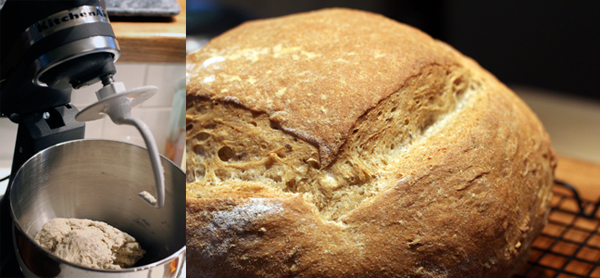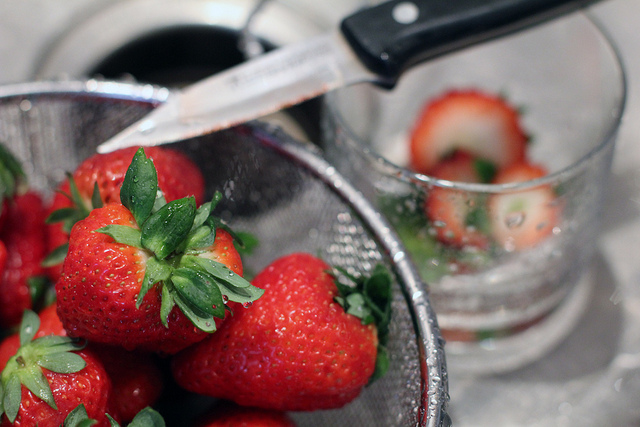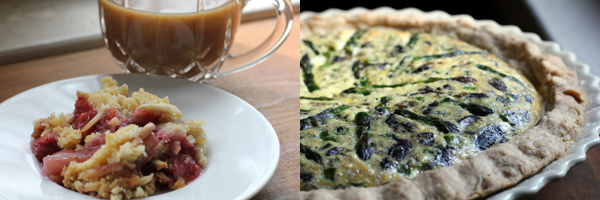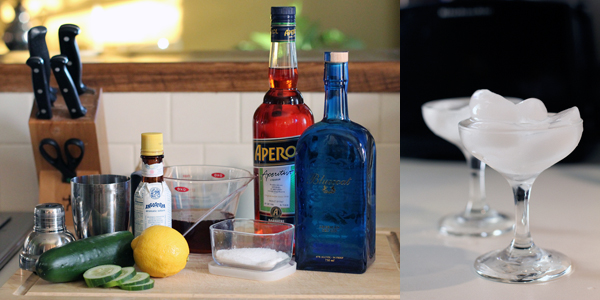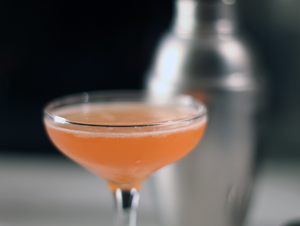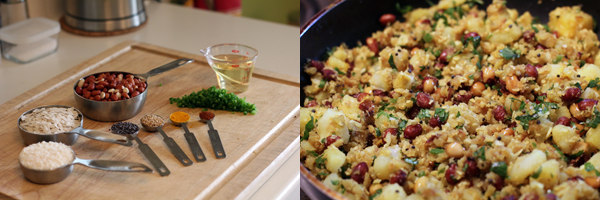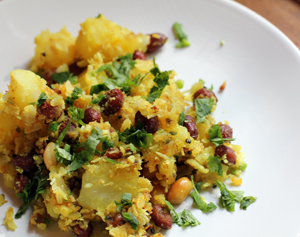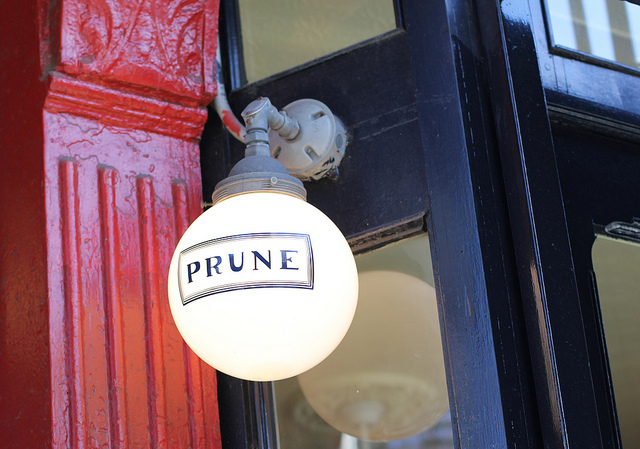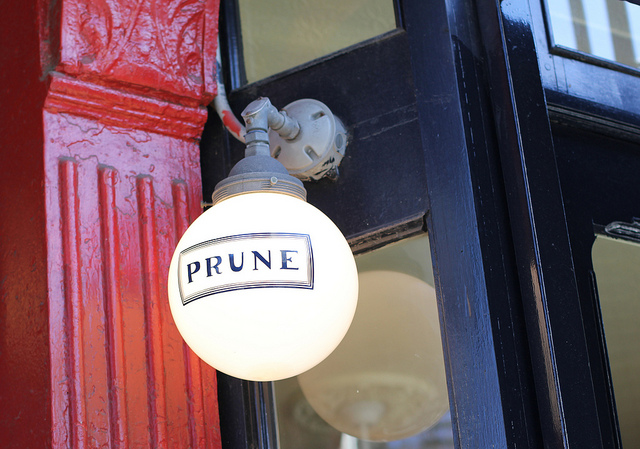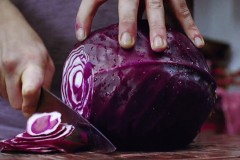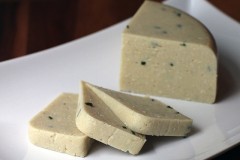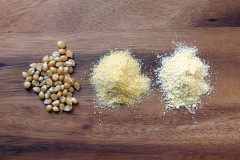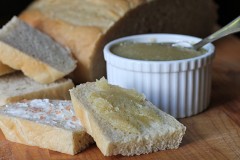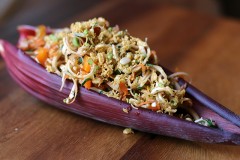The Three Points Kitchen crew launches its first book club this week with a bit of friendly conversation surrounding Blood, Bones & Butter: The Inadvertent Education of a Reluctant Chef
, a memoir by Prune‘s chef Gabrielle Hamilton.
To kick things off in style, we took a stab at getting a table at her restaurant (during the no-reservations brunch crush!) so that we might try out her much-praised offerings for ourselves. We had already dug around in her life through the book, so now it was time to pull up a chair and dig around in her kitchen.
We were prepared to endure a long wait outside the establishment, standing among Prune’s notoriously adoring fans. We were prepared to be rushed through our meal by an overworked staff hard hit by an ever-lengthening wait list. What we got, however, was nothing of the kind. We received a prompt, if somewhat over-cozy seating, great food, and killer Bloody Marys. Because we would certainly not be so gauche, we did not whip out our cameras and take pictures of our meals before digging in. Honestly, though, I so much enjoyed the spicy stewed chickpeas and tomatoes–served in a deep bowl with poached eggs and two thin strips of toasted-to-charred bread–that I hardly need a snapshot to remind me how much I want to eat it again.
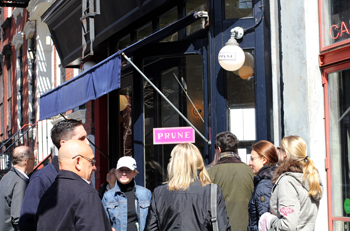 When we arrived just 15 minutes before the hostess unlocked the front door, the line was already about twenty deep. Not too bad for an exceptionally sunny, not-a-cloud Sunday morning in New York, but my anxiety increased as the numbers grew. I watched them watch me eat through the huge front windows.
When we arrived just 15 minutes before the hostess unlocked the front door, the line was already about twenty deep. Not too bad for an exceptionally sunny, not-a-cloud Sunday morning in New York, but my anxiety increased as the numbers grew. I watched them watch me eat through the huge front windows.
After reading Hamilton’s book, with her vivid descriptions of the heat and speed demands placed on those in the kitchen, it also felt like we were committing a kind of aggression against the employees. And yet Prune is a restaurant in New York City that is open for brunch. What were we supposed to do–stay home and give it its space? Still, in Blood, Bones, and Butter Hamilton conveys the pressure everyone is cooking under in the fast rush of a multi-claused sentence:
The whole crew feels it–that tension before a fight. The customers lined up outside before we have even turned on the lights and had our family meal, the total knowledge of what is coming–the relentless, nonstop five-hour beating–and we practically huddle up, poised for the bell, we are scared even, saying in psyched but tense tones, “Here we go!” as Julie unlocks the door and they flood in, scraping the chairs, and that milk foamer on the espresso machine rages its monster roar, and we stand motionless in the kitchen, looking out onto the floor, waiting for the panic of tickets, tickets, tickets.
Just a few lines later she gets at the real psychological battle that lies just beneath this real-world onslaught:
No matter how well set up you are, how early you came in, how tight and awesome your mis en place is, there will be days, forces, events that just conspire to fuck you and the struggle to stay up–to not sink down into the blackest, meanest hole–to stay psychologically up and committed to the fight, is the hardest, by far, part of the day.
 Between reading Hamilton’s memoir and finally also consuming Bourdain’s Kitchen Confidential
Between reading Hamilton’s memoir and finally also consuming Bourdain’s Kitchen Confidential , the primal lesson underlying each level of shock and terror they relate took me right back to my musical training. In the studio I studied in, the line went that if you could imagine pursuing any other career–accountant, hair stylist, doctor–then you should do that and leave your concert violinist dreams in the closet. But if you truly couldn’t do anything else with your life but play, well, then, here’s what you could be taught and god help you handle the rest. For every dinner party that has ended with the line, “Your cooking is fabulous. You should so open a restaurant!” and images of a place just as charming as Prune floating in my mind, I’m going to cling to that same lesson, picked up and processed in an earlier life.
, the primal lesson underlying each level of shock and terror they relate took me right back to my musical training. In the studio I studied in, the line went that if you could imagine pursuing any other career–accountant, hair stylist, doctor–then you should do that and leave your concert violinist dreams in the closet. But if you truly couldn’t do anything else with your life but play, well, then, here’s what you could be taught and god help you handle the rest. For every dinner party that has ended with the line, “Your cooking is fabulous. You should so open a restaurant!” and images of a place just as charming as Prune floating in my mind, I’m going to cling to that same lesson, picked up and processed in an earlier life.
Rebecca adds: One of the lessons learned from Kitchen Confidential is that brunch is a throwaway meal, no matter how popular. Eggs are nice, but they’re still eggs. Blood, Bones & Butter didn’t give me much added confidence, with Hamilton describing the brunch service in boxing terms, as she battles blood sugar drops with doses of orange juice, iced Ovaltine and a quart of icy Coke, taken at once, like a trainer squirting Gatorade over a fighter’s head in the corner:
During the eighth round, close to three o’clock, I get dizzy stupid. I don’t even know what I’m cooking. By which I mean, I know what each individual item in front of me is, but I don’t know what I’m cooking in the larger picture. Is this the eggs Benedict that picks up with the salmon omelette? Or is this the benny that picks up with the oatmeal and lamb sausage?. . . Five minutes in the life of a cooked egg, unlike a nicely resting piece of meat, is the difference between excellent and bullshit.
Nice to discover, then, that her Prune crew has the fight won. While I could argue that Molly’s poached eggs were cooked a bit hard, and that my sour cream and caraway omelette wasn’t done to the tender perfection Hamilton describes in an omelette demo given by legendary French chef André Soltner, the filling combination was a revelation. And the skewer of pickled baby turnip, capers, radish and Brussels sprout in my Bloody Mary (with lemon vodka) made me feel like I’d gotten a satisfactory serving of veggies.
by Charlotte Biro (1973)

